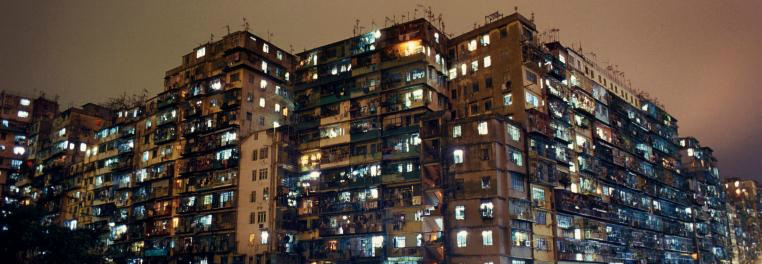
I’ve been reading Chasing the Dragon and read up a bit on Kowloon Walled City. Here’s a blog post that claimed KWC was an anarchy. Sort of:
However, for about 50 years after the end of World War II, there was an experimental, if you will, Libertarian paradise, just outside of Hong Kong, known as the Kowloon Walled City. The area was governed by no government. There were no building permits, no regulations, no utilities (or very few), no safety standards, no licensing of doctors or dentists, no food standards – nothing.
And it is interesting what happened there. The area thrived, to be sure, but the standard of living was one step above squalor. Residents had to work long hours and manual labor, just to have a small, airless room to live in, and a modest amount of food. And for the first 30 years, drug gangs ran the place, exacting bribes from nearly everyone there, and doling out punishment to those who disobeyed them.
And part of the comment on the post:
Note that even though Kowloon was an area of anarchy, it was able to survive only because the government of Hong Kong did provide some water outlets and electricity. Also, the outside world provided a market for products made and services sold in the walled city – so it was not truly independent.
And it was government again, who cleaned out the Triads during the latter part of the existence of the Walled city.
A government “cleaning” out the mafia is another way of saying a government put a competing government out of business, to refer to Murray Rothbard’s famous quote.
So if there was a police presence claiming a right to the initiation of force, as well as a mafia claiming a right to the initiation of force, then calling it an anarchy at all is a category error, twice over.
Regardless, Kowloon Walled City wasn’t an experiment at all, at least not in the way something like the Free State Project is an experiment—unless you think World War II refugees squatting a former military outpost is a conscious effort in agorism. You’d be wrong.
Like Mexico trying to adopt a U.S.-style constitution, libertarianism has to be consciously chosen. You can’t airdrop a new social system into a geographic area an expect it to work as planned. That’s just as silly as expecting a piece of paper with words written on it to restrain people who hold power and authority.
2 Comments
I regret taking so many years to find this gem. Calling Kowloon a “libertarian experiment” would be akin to call any miserable slum neglected by government and full of crime and junkies (that abound in the whole world, uber-statist Brazil favelas, and many first world no-go zones come to mind) a libertarian experiment. The difference is that Kowloon was “formally” abandoned by government while the other examples are just “neglected” (also abandoned) by government. It can hardly said that life conditions in Kowloon were the consequence of freedom, more than conditions in any other slum. Government will NEVER let its productive milk cows run out of sight, but occasionally will let the people it deems disposable a free pass (only because it doesn’t see them as “profitable”.
Who knows, too, in what ways the government may have used gangs–or any entity, really–as proxies. I’m sure stuff like that happens in ways we never know about, especially with governments as big as China’s.